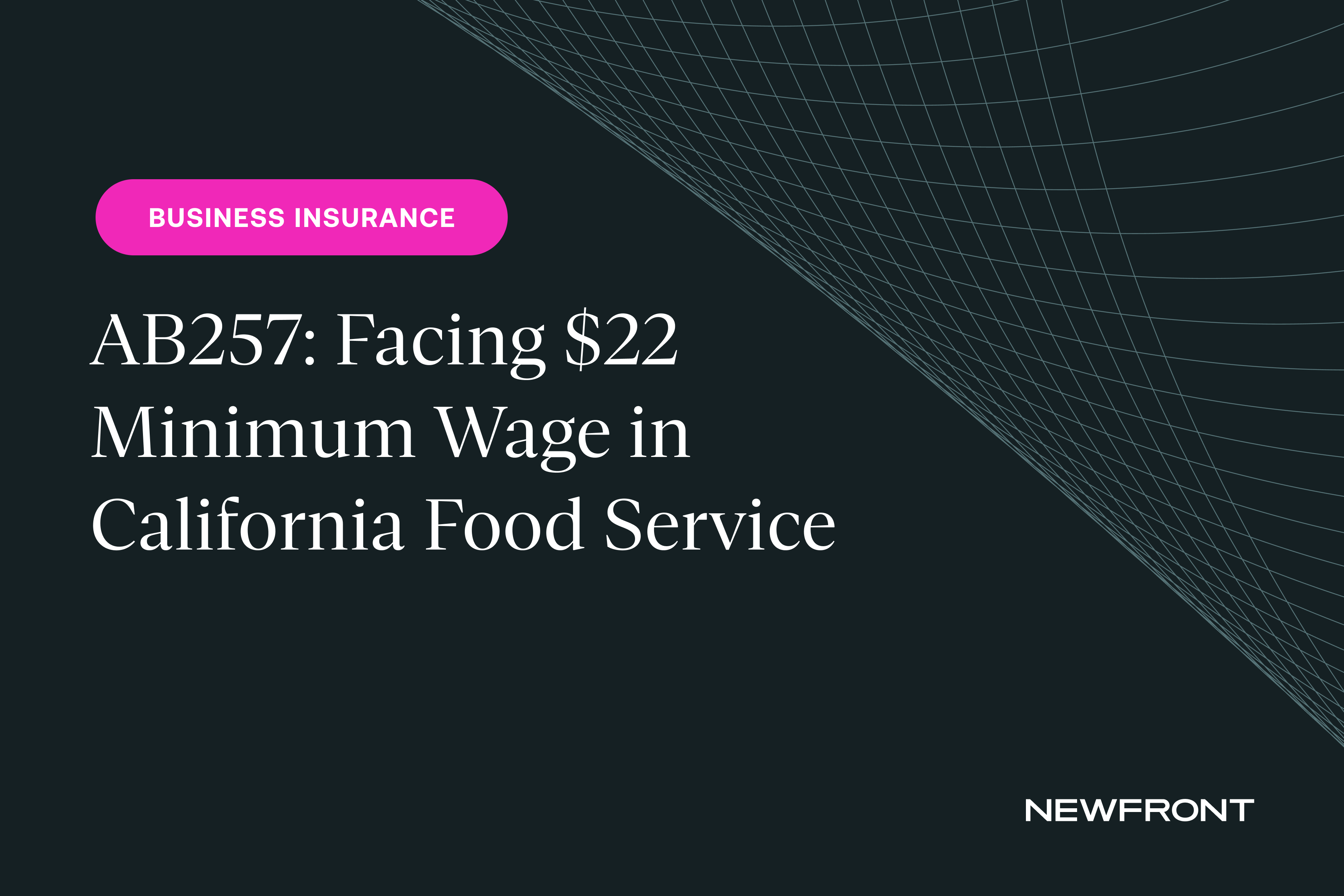Fast Recovery Act (AB257): Facing $22 Minimum Wage in California Food Service
By Angelo Dionisiou | Published November 22, 2022

As California goes, so does the nation. As the fifth largest economy on the planet, California sets the tone and tempo for the rest of the country - quite often the world. As such, it is important to analyze why AB257 has garnered so much attention, especially due to its possible far-reaching implications beyond the Golden State and for all business owners.
There are a number of issues that have been challenging the restaurant industry as of late including COVID, inflation, the dramatically rising cost of protein, produce, paper goods, and labor shortages, just to name a few. Now there is a new challenge on the horizon, the Fast Recovery Act, signed by California Governor Gavin Newsom on September 5, 2022.
What is the Fast Recovery Act?
Beginning January 1, 2023, a council will be established consisting of workers, corporate representatives, franchises, and state officials tasked with setting industry minimum wages, working hours and other conditions. The law will apply to workers who are employed by fast food restaurants with at least 100 locations nationwide. The minimum wage for groups at this size could rise as high as $22 next year, currently minimum wage is $15 an hour in California, with annual increases on the cap tied to inflation.
What Does This Mean for the Industry?
Many franchise owners are vehemently opposed to the bill as it significantly increases the cost to do business in the state, upends the franchise business model, and allows for a council of 10 unelected political appointees to run the fast-food restaurant industry. The act has an intended consequence of making the big box retailer responsible for reported wage theft instead of the individual franchise owner; similar to legislation that was passed previously in the garment industry. Ultimately, this could potentially result in the franchisee becoming an employee of the larger corporation instead of being an independent business owner.
Alternatively, Union proponents argue that the fast-food industry is rife with labor violations and 85% of fast-food workers in California are experiencing wage theft, with 57% of workers experiencing multiple forms of wage theft. Per their estimates, approximately 425,000 workers are not being compensated correctly. Further, they argue, that the current model of franchise owners does too much to protect the global big box brand and often siphon off profits to evade liability.
Regardless of which side of the argument you fall on, and with labor costs running between 20-30% of gross revenue, this can be a significant increase to the cost base with the inevitable result of food price increases and of course, cost to customers. With a recession looming, there are questions about how much can be absorbed with price increases. Current estimates range from 2.3% to 20%. It may appear, at first glance, that if you are under that 100-store mark this may not affect you, but it will as you will now be competing for employees earning a higher wage somewhere else.
What About Workers Compensation Rates?
There are definitive implications to the workers compensation marketplace, which is rated on payroll so an increase in wages translates into an identical increase in premium. For example, San Diego minimum wage is going from $15 per hour to $16.25 on January 1, which corresponds to an 8.3% increase in direct labor costs, but also an 8.3% increase in your workers compensation basis. If you are subject to the FAST act, and your wages land on $22 an hour, that increase is 47%.
The council will also have the ability to establish new safety standards for workers which will require additional compliance issues for the employer.
How Should Businesses Prepare?
Review your employment practices.
Make certain handbooks are up to date, you have proper training in place, scheduling policies, and timekeeping.
Either obtain or maintain an Employment Practices Liability insurance policy to protect yourself against allegations of discrimination, harassment, retaliation and more.
Make a general review of all your cost centers to identify and moderate any waste in an effort to offset increase in labor costs.
Research technology: the tools available to the fast-food restaurant are constantly growing, such as kiosks and automated frying technology.
Stay informed. Restaurant groups and associations, such as the California Restaurant Association (CRA), are great resources for information for navigating the intricacies and evolution of the bill.
In conclusion, AB 257 will impose an additional strain to the fast-food industry already plagued with challenges. With a little planning and that incredible resilience I have come to know from the fast-food industry, the industry can continue to thrive. Reach out to your trusted advisors now, in the insurance industry or otherwise, to start planning for all of the changes coming this January.

Angelo Dionisiou
Vice President, P&C Producer
Angelo Dionisiou is a Vice President and P&C producer, specializing in hospitality. Bringing more than 20 years of insurance experience coupled with a background in the restaurant industry, Angelo expertly assesses risk and crafts ideal solutions for clients across the country.


